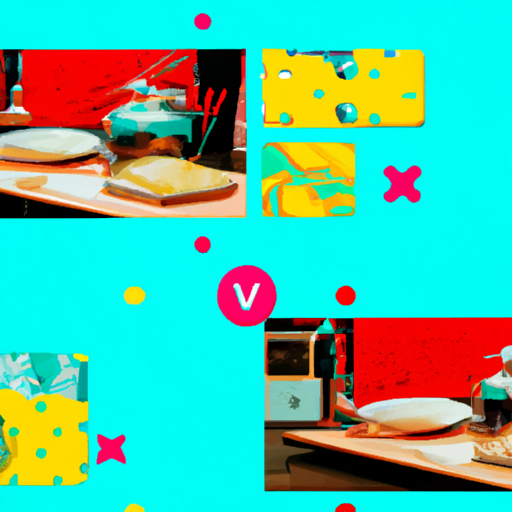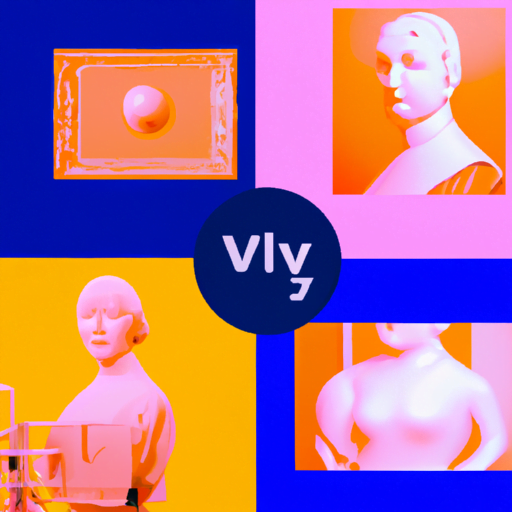
-
Table of Contents
- AI-Infused Motion Graphics: Bringing Designs to Life
- The Rise of AI in Motion Graphics
- The Benefits of AI-Infused Motion Graphics
- Applications of AI-Infused Motion Graphics
- 1. Advertising and Marketing
- 2. Entertainment and Media
- 3. Education and E-Learning
- Case Studies: AI in Motion Graphics
- 1. Adobe Sensei
- 2. NVIDIA GANs
- The Future of AI-Infused Motion Graphics
- Summary
AI-Infused Motion Graphics: Bringing Designs to Life

Artificial Intelligence (AI) has revolutionized various industries, and the world of design is no exception. With the integration of AI technology, motion graphics have taken a giant leap forward, enabling designers to create captivating and dynamic visuals that bring designs to life. This article explores the impact of AI on motion graphics, highlighting its benefits, applications, and the future possibilities it holds.
The Rise of AI in Motion Graphics
Motion graphics have long been a powerful tool for designers to communicate ideas, tell stories, and engage audiences. Traditionally, creating motion graphics required extensive manual work, including keyframing, animation, and rendering. However, with the advent of AI, designers now have access to advanced algorithms and machine learning techniques that automate and enhance the motion graphics creation process.
AI-infused motion graphics leverage the power of machine learning algorithms to analyze and understand the content, context, and desired outcomes of a design project. By doing so, AI can generate animations, transitions, and effects that align with the designer’s vision, saving time and effort while maintaining creative control.
The Benefits of AI-Infused Motion Graphics
The integration of AI technology in motion graphics brings numerous benefits to designers, allowing them to push the boundaries of creativity and efficiency. Some key advantages include:
- Time-saving: AI algorithms can automate repetitive tasks, such as keyframing and animation, significantly reducing the time required to create motion graphics.
- Enhanced creativity: AI can generate unique and innovative design elements, providing designers with new possibilities and inspiration.
- Improved precision: AI algorithms can analyze data and make precise adjustments, resulting in smoother animations and seamless transitions.
- Efficient collaboration: AI-powered tools enable designers to collaborate seamlessly by automating version control, asset management, and feedback integration.
Applications of AI-Infused Motion Graphics
The applications of AI-infused motion graphics are vast and diverse, spanning across various industries and sectors. Here are some notable examples:
1. Advertising and Marketing
AI-powered motion graphics have transformed the advertising and marketing landscape. Brands can now create visually stunning and attention-grabbing advertisements that resonate with their target audience. By analyzing consumer data and preferences, AI algorithms can generate personalized and engaging motion graphics that drive conversions and brand awareness.
2. Entertainment and Media
In the entertainment industry, AI-infused motion graphics have revolutionized film, television, and gaming. AI algorithms can generate realistic and immersive visual effects, enhancing the overall viewing experience. Additionally, AI-powered tools enable game developers to create dynamic and interactive environments that respond to player actions in real-time.
3. Education and E-Learning
AI-powered motion graphics have also found their way into the education sector. By combining visual storytelling with interactive elements, AI-infused motion graphics can make complex concepts more accessible and engaging for learners. This technology has the potential to revolutionize e-learning platforms, making education more interactive and personalized.
Case Studies: AI in Motion Graphics
Let’s explore some real-world examples of how AI has been integrated into motion graphics:
1. Adobe Sensei
Adobe Sensei, the AI platform developed by Adobe, has revolutionized motion graphics creation. With features like Auto Reframe, Adobe Sensei can automatically analyze video content and generate motion graphics that adapt to different aspect ratios and screen sizes. This saves designers valuable time and ensures their content looks great on any platform.
2. NVIDIA GANs
NVIDIA, a leading technology company, has developed Generative Adversarial Networks (GANs) that can generate realistic and high-quality motion graphics. By training the GANs on vast amounts of data, NVIDIA has been able to create AI models that can generate animations, transitions, and effects that are indistinguishable from those created by human designers.
The Future of AI-Infused Motion Graphics
The future of AI-infused motion graphics is promising, with endless possibilities for innovation and creativity. Here are some potential developments to look forward to:
- Real-time AI: As AI algorithms become more powerful and efficient, we can expect real-time AI-powered motion graphics creation, enabling designers to see their ideas come to life instantly.
- Personalized experiences: AI algorithms can analyze user data and preferences to generate personalized motion graphics experiences, tailoring content to individual viewers.
- Seamless integration: AI-powered tools will continue to improve collaboration and integration, allowing designers to work seamlessly across different platforms and software.
- Advanced visual effects: AI algorithms will continue to push the boundaries of visual effects, enabling designers to create even more realistic and immersive motion graphics.
Summary
AI-infused motion graphics have revolutionized the design industry, empowering designers to create captivating and dynamic visuals with ease. The integration of AI technology brings numerous benefits, including time-saving, enhanced creativity, improved precision, and efficient collaboration. The applications of AI-infused motion graphics span across various industries, from advertising and marketing to entertainment and education. Real-world examples, such as Adobe Sensei and NVIDIA GANs, showcase the power of AI in motion graphics creation. Looking ahead, the future of AI-infused motion graphics holds exciting possibilities, including real-time AI, personalized experiences, seamless integration, and advanced visual effects. As AI continues to evolve, designers can expect even more innovative tools and techniques to bring their designs to life.
